If you only light one area of your garden, make sure it's this one – experts say it will help to boost safety, style and security
Illuminate the way with these innovative garden path lighting ideas that will turn a functional landscaping element into a design feature

While you can often get away without lighting other areas of the garden, regularly used pathways are the exception to the rule. If it's tricky to navigate in the dark and access across your garden to your porch or back door is difficult, you will need good garden path lighting ideas to show you the way.
Paths always need to be lit for safety, and are the first thing to consider when you're landscaping, especially if budget is an issue. It's a good idea to experiment with grouping candles, lanterns and portable lamps along the path that you can move around until you find an effect you like, then find a more permanent solution for your garden lighting ideas that works in the same way.
The next step is to decide if you're happy with lighting options that don't require wiring in or would prefer a more permanent built-in design. If you decide on the latter you'll need to contact a garden designer or electrician who will help take your lighting project to the next level.
1. Choose subtle downlighting to highlight garden paths
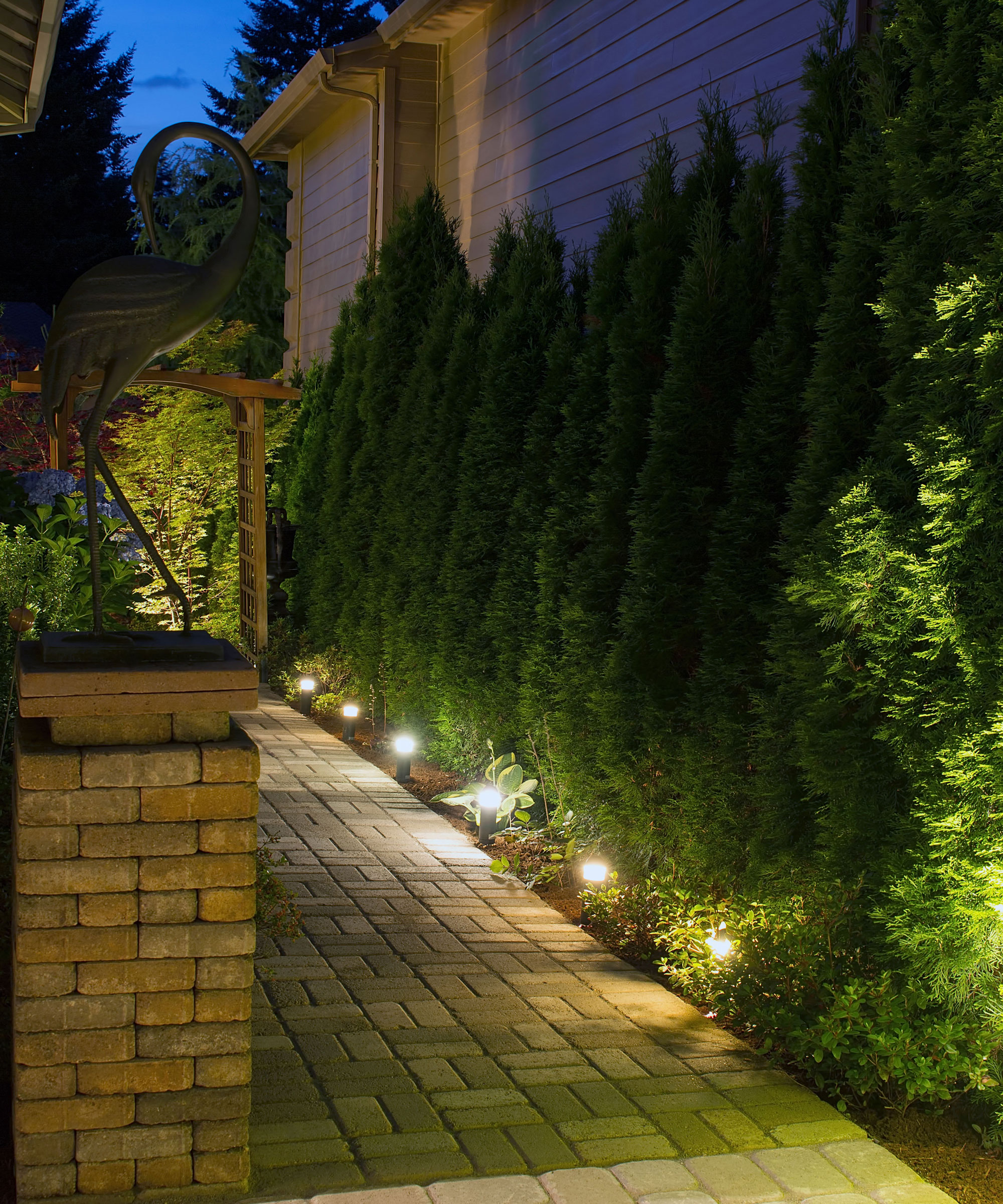
"Path lighting is usually achieved by using downlights," says leading landscape designer Rosemary Alexander, co-author of landscaping bible The Essential Garden Design Workbook, available from Amazon. "These cast pools of light onto the ground, accentuating the surface texture.
"Path lighting is primarily functional, but should be carefully designed so that it does not detract too much from other features."
Choose discreet downlights that light the way without dominating the design. Path lighting can also be concealed so that it's not apparent during the day if you don't want lighting to intrude on your planting. Opt for small spike lights with angled heads that you can adjust and move around to achieve subtle shifts, which is especially useful as plants grow and the landscape evolves.

Rosemary Alexander is founder and principal of the English Gardening School, a talented garden designer, and a skilful educator. She is a trustee of the Great Dixter Charitable Trust and judges regularly for the Royal Horticultural Society. She is also well-known on the international lecture circuit.
2. Turn garden path lights into a design feature
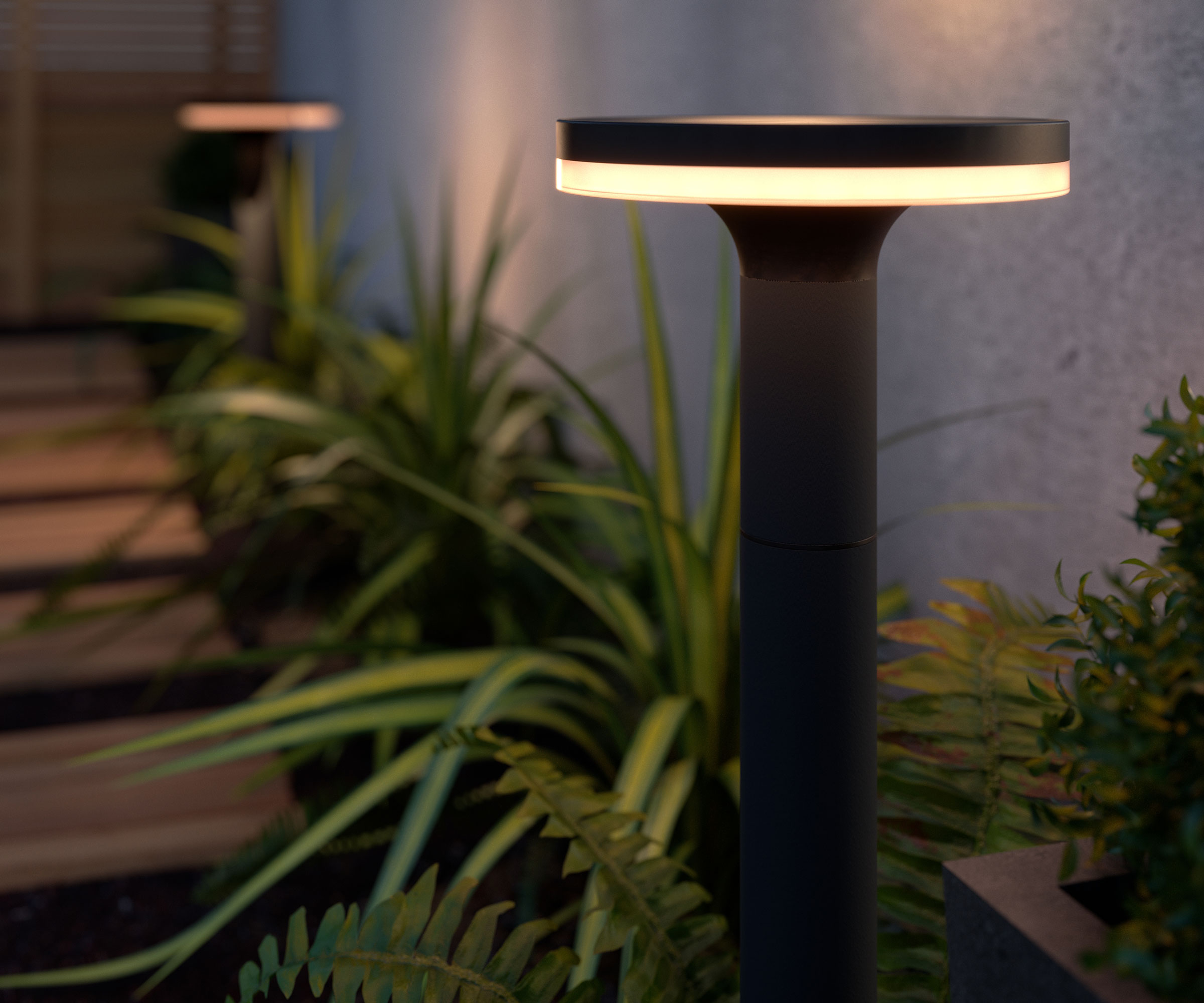
Alternatively you can choose downlights that are more decorative and draw attention to themselves as well as your garden path ideas, to create more of a focal point in your garden design.
Bring your dream home to life with expert advice, how to guides and design inspiration. Sign up for our newsletter and get two free tickets to a Homebuilding & Renovating Show near you.
"You can use more decorative downlights with different designs and finishes," says Rosemary. "These are often a mushroom or globe shape that are a feature in their own right." This style of light still faces down onto the path.
The most effective garden path lighting ideas generally include options with warm, off-white tones to create a welcoming glow, rather than pure white, which can be a common garden lighting mistake as they often feel a little harsh and industrial.
When choosing lights, always aim for a balance between function and atmosphere. The goal is to guide and emphasise without overwhelming, and to integrate path lights into the overall garden design scheme.
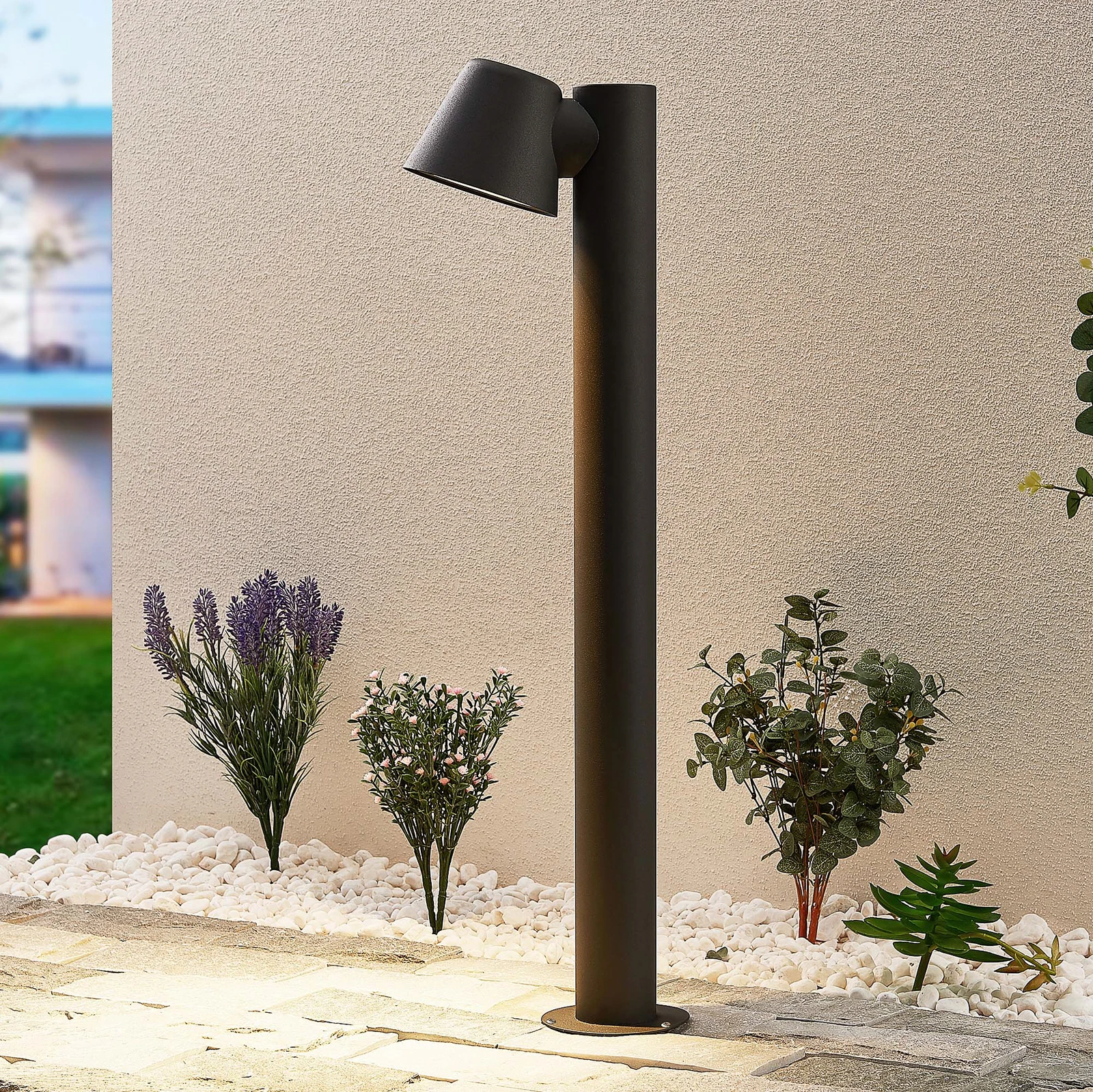
Give your path a serious injection of style with this stylish addition. Crafted from aluminium and standing 70cm in height, it's IP44 rated for outdoor use. Buy multiple designs for a discounted price.

Featuring a tough stainless-steel body and a warm white bulb, this sleek looking path light is ideal for a modern outdoor space. It is IP44 rated for outdoor use and comes with a two-year guarantee.
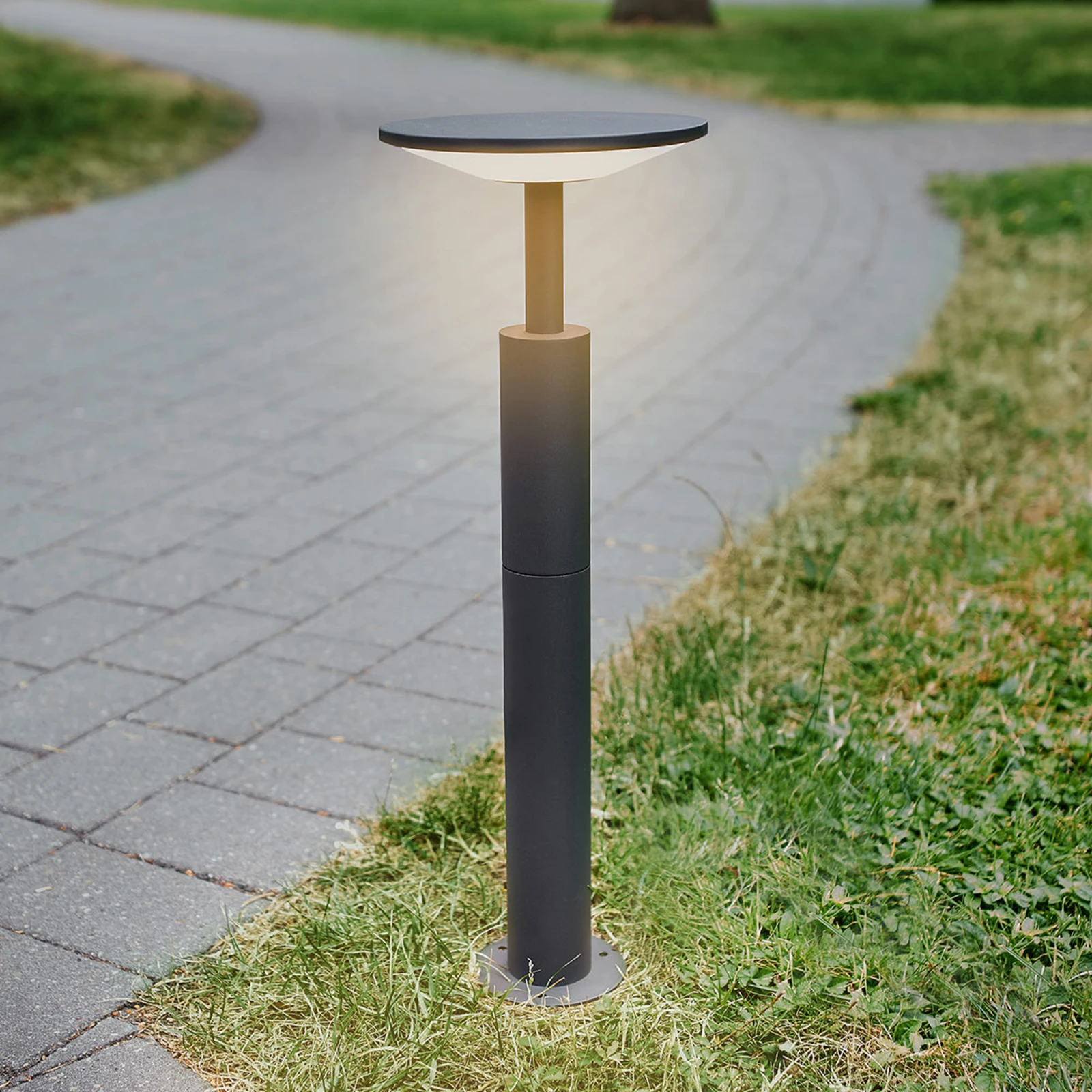
We love the effect this post-style path light creates. Made from aluminium with a white polycarbonate cover, the light shines downwards to reduce any potential glare. It measures 60cm in height and is IP65 rated.
3. Try recessed path lights for a sleek finish
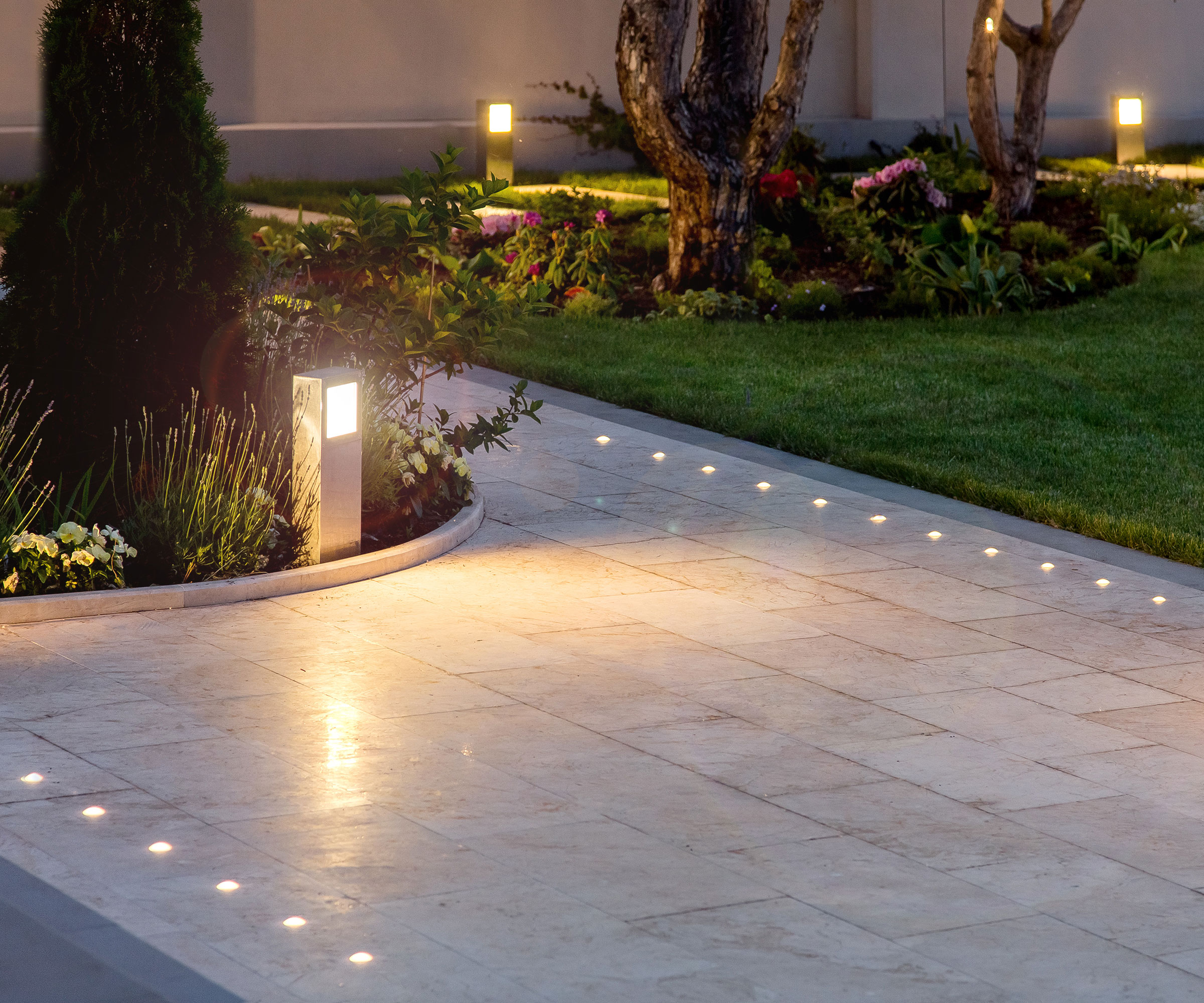
"For garden paths, try low, directional lighting such as recessed lights that clearly define the route and reduce the risk of tripping," says lighting expert James Kendall, operations director at KES Lighting & Home. "The light should fall gently onto the path below, creating sufficient visibility without causing glare or overwhelming the garden design."
Directional lighting is also a good choice if you want to link your garden path lighting to your driveway lighting ideas for a cohesive looking design. You will need a specialist lighting expert to install mains-powered ground lights like the ones pictured above, but there are lots of benefits if you do.
They can be operated on a timer system to come on at dusk to light your way to the door as part of your front garden ideas. If installed correctly they will last for many years. They also provide security by efficiently lighting up a dark garden space.
Just be sure you avoid an airport runway look by choosing bulbs with soft lights rather than ones that are too bright. These GoodHome Wonsey Black Outdoor Ground lights from B&Q are a budget-friendly way to get a designer look.

As operations director at KES Lighting & Home, James Kendall is well placed to offer expert guidance on all aspects of home lighting. James understands just how transformative great garden lighting can be, and has the experience and expertise to transform any space.
4. Push easy solar lights into path borders

Sometimes the simplest ideas are the best, especially if you like an informal gardening style. Add a touch of magic to your garden path lighting ideas with some of the best solar lights. Installation is straightforward, and won't require electricity or wiring. Simply push the stakes into the ground amongst your plants and let solar power take over.
These Firefly Solar Garden Lights from Amazon are inspired by the fireflies you see flickering on a summer’s evening. This decorative light features LED bulbs that sway gently in the breeze, creating a beautifully ethereal effect. LED bulbs are energy-efficient and long-lasting, providing a warm glow for hours.

These simple solar post lights come in a pack of two, four or six lights. With an IP65 rating they are fully waterproof and provide 10-12 hours of illumination when fully charged. They have an average 4.3/5 customer rating.
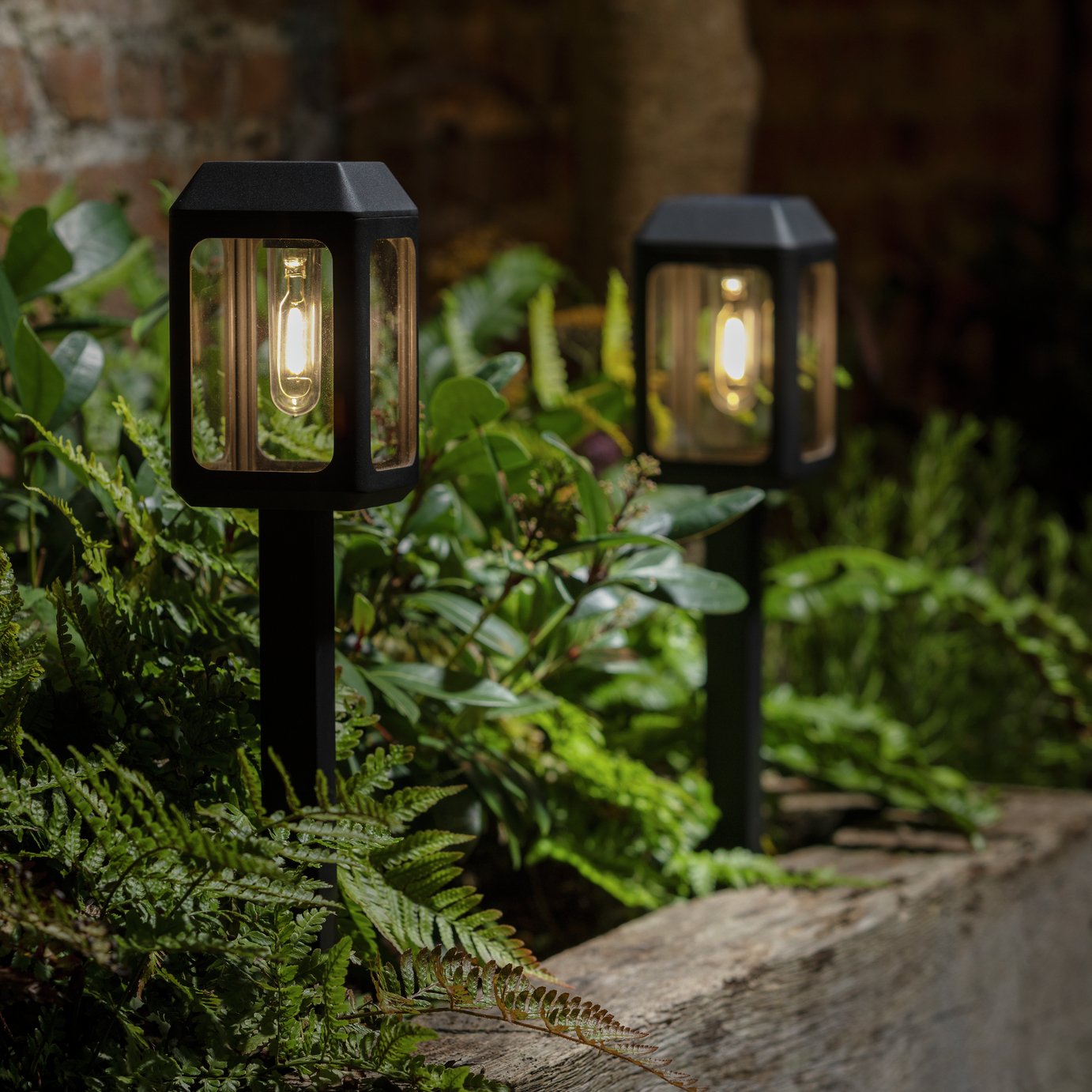
Ideal for adding to flowerbeds alongside your path, these lights will automatically turn on at dusk and provide up to eight hours of light once they have been fully charged for 10 hours. IP44 rated for outdoor use, they are made from hard-wearing plastic and come as a set of two.
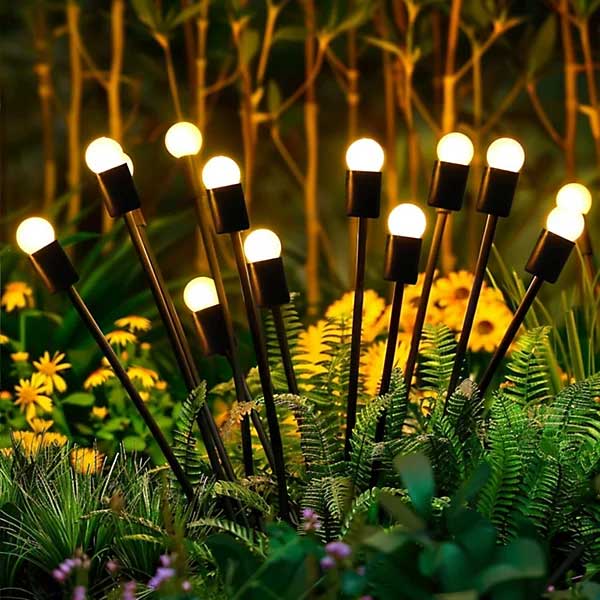
Ideal for inserting in a flowerbed next to your garden path, these decorative solar lights will add a fun touch to your lighting scheme. Available as a pack of four, the lights will gently sway in the breeze for added effect.
5. Look for unusual finishes to elevate your design
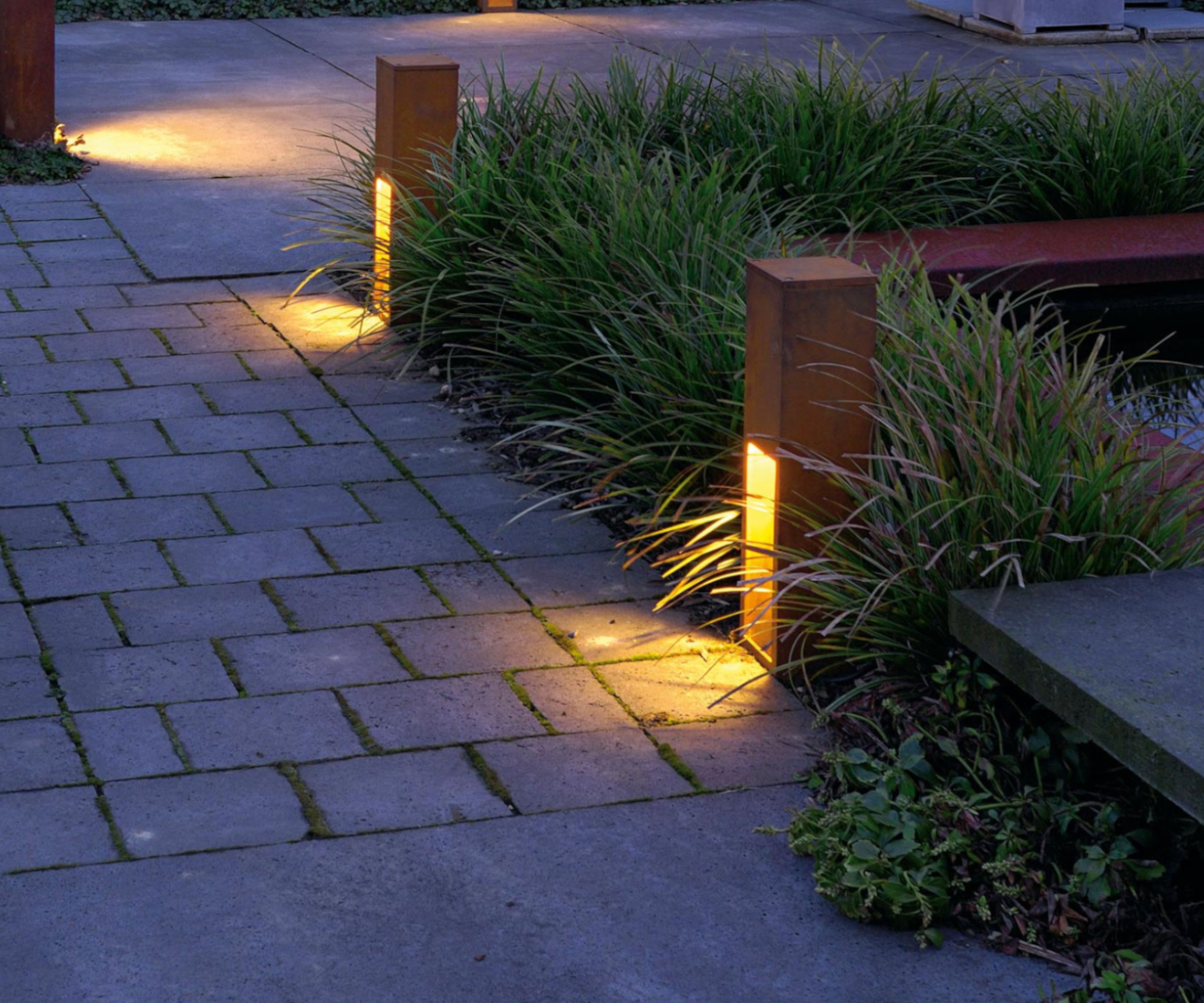
Look for unique details to make your garden path lighting ideas stand out from the crowd and become a feature in their own right. Metal, copper, and stainless steel are all good long-term choices, but powder-coated aluminium and resin can work just as well.
Now elevated to the status of modern design classic, corten steel seamlessly blends into any garden, whether it's urban space or a more rural location. Rusting is a natural process, the texture and appearance evolving over time according to exposure and weathering, lending a unique look to each individual piece. Opting for these sorts of materials is a great way to make garden lighting look expensive.
These Rusty Slot steel floor lamps by studio SLV, available from Amazon, have a lovely designer look. This is achieved by a special chemical treatment of the steel used that makes each luminaire a unique piece. Designed for outdoor use, they connect to a mains supply and are ideal for your garden lighting path ideas.
6. Stagger some bollard lights along the garden path
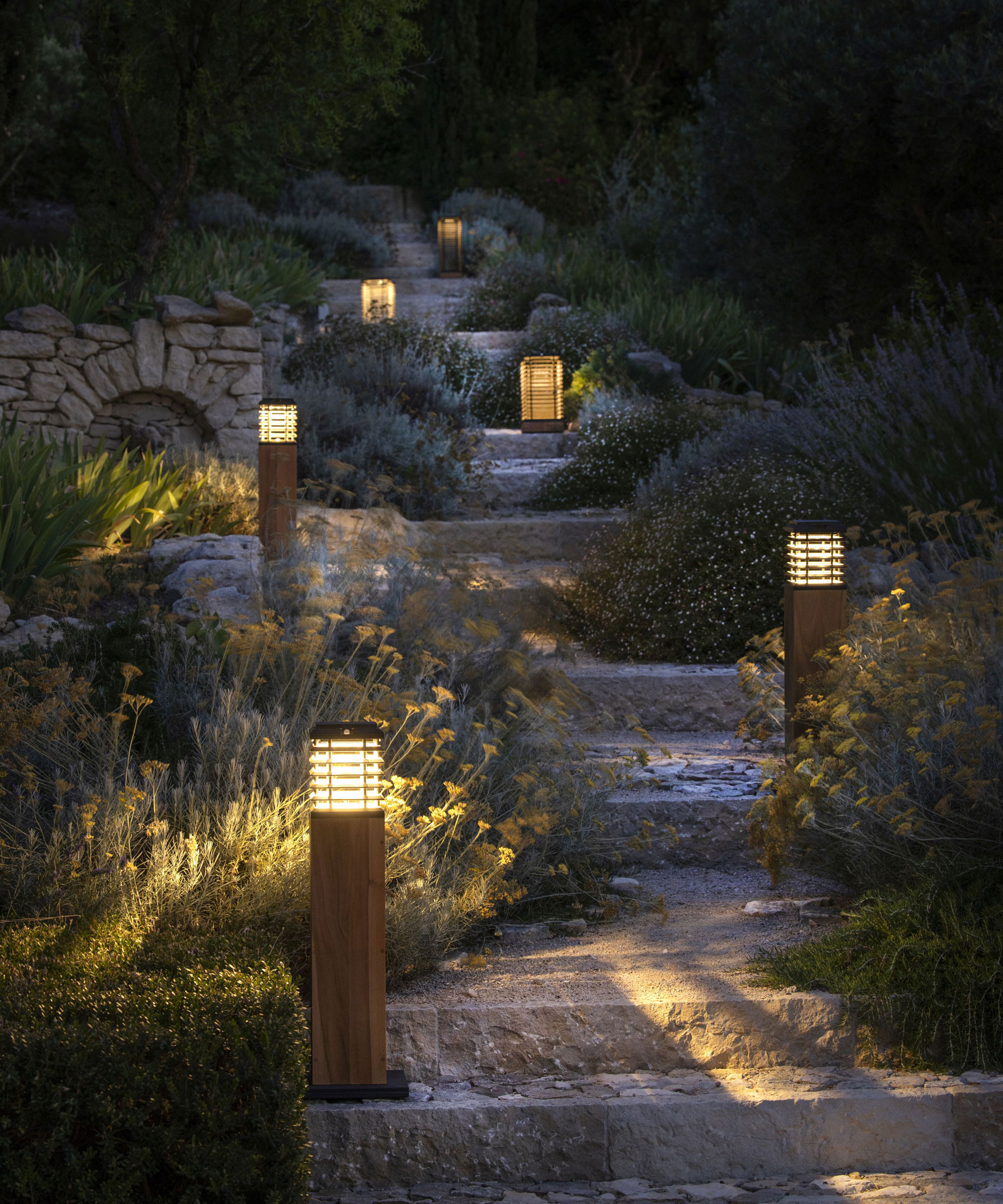
If you prefer an easy option that works for both contemporary and rustic designs, try bollard lights. Although the name makes them sound pretty functional, they add style to your outdoor space and are a great way to light up garden pathways, especially if arranged in an eye-catching staggered design.
Another plus is that since bollard lights provide 360-degree lighting, they’re perfect for illuminating pathways and flowerbeds at the same time. While some bollard lights can be solar or battery-powered, most need to be connected to a power supply.
7. Throw light on garden paths from a height
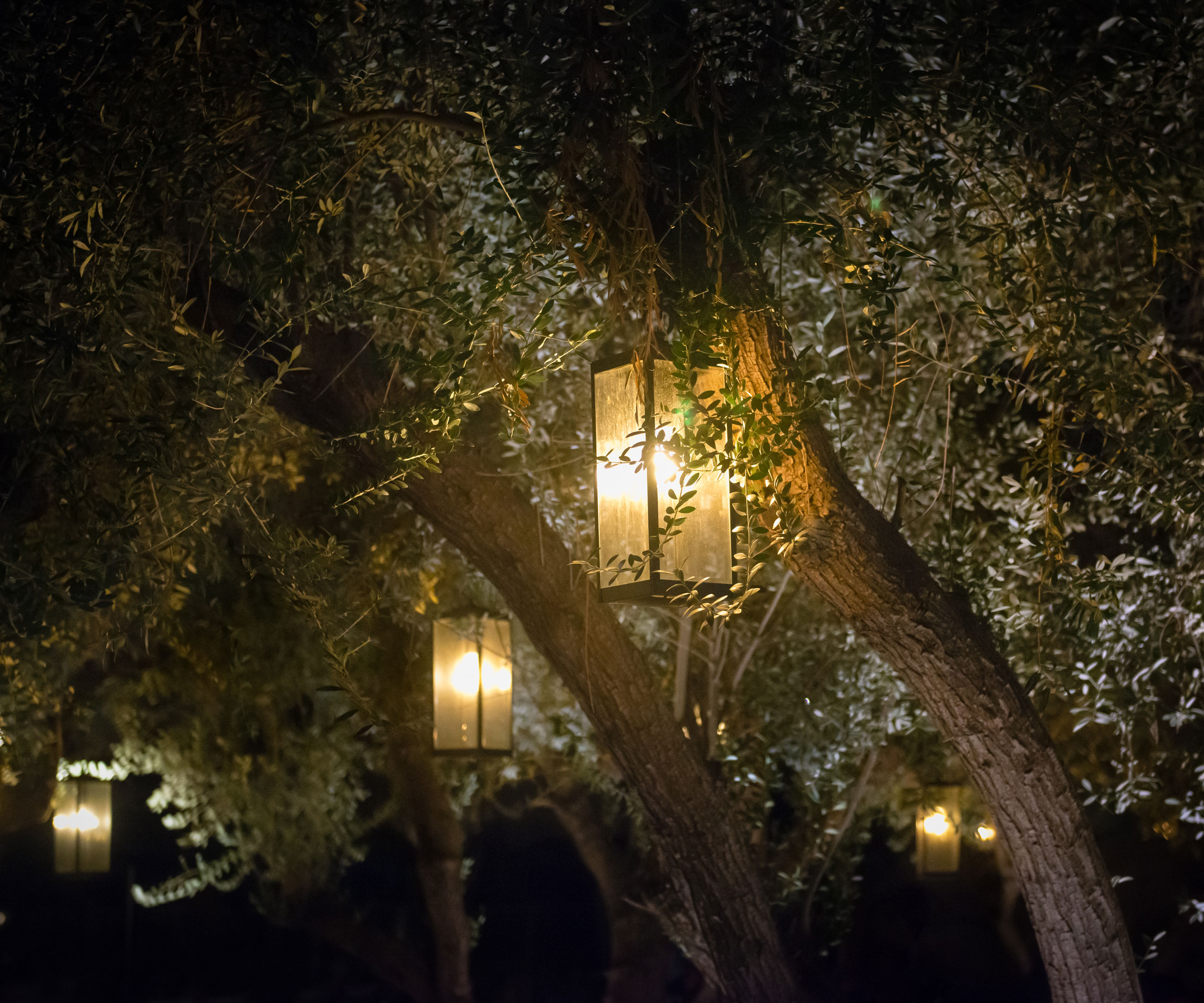
Downlighting pathways from adjacent trees, walls, or as part of your fence lighting ideas can have a much softer, natural feel than dedicated garden path lights. It's an effective technique for adding interest to a functional pathway.
If positioned in foliage the lighting fixture could be subtly hidden from sight too – assuming you want it to be. Light cast down on to paths from above, often filtered through the tree canopy or other features, results in a much softer glow.
This type of downlighting is called ‘moonlighting’, where a light is installed high in a tree or other structure such as a high wall or fence to create magical shadow effects.
8. Add clusters of lamps or lanterns for special occasions
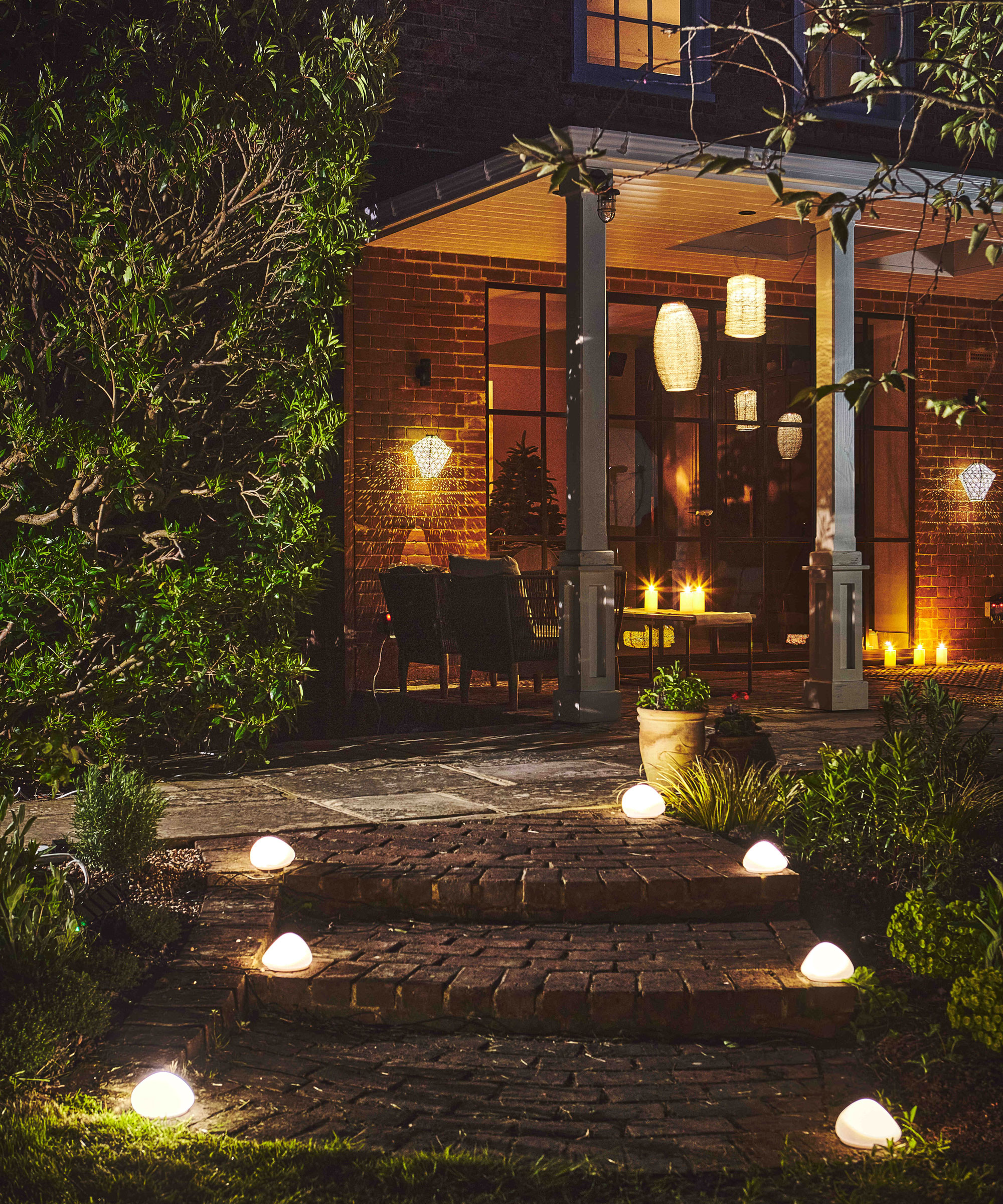
For high days and holidays it's lovely to do something extra special with your garden path lighting ideas. There's nothing more magical than a path lit for the occasion to welcome guests to your home, or to add some extra fun to your pergola ideas for a more atmospheric setting.
There's a huge range of portable lamps, floor lanterns and flameless LED pillar candles that will do the trick perfectly and can be arranged along the path to light the way to your celebration. Or try something a little more unusual like these elegant solar-powered glass pebbles.
Simply place them along the path to charge during the day, and as dusk falls, they will automatically illuminate. These solar-powered pebble lights at Amazon will create a similar effect.
FAQs
How tall should pathway lights be?
"When considering how tall pathway lights should be I recommend 450mm to 650mm for smaller pathways," says lighting expert Alina Enache, co-founder of Lamp Genius. "These are the right height for paths and give you good light coverage without being overwhelming.
"For larger pathways choose taller sizes between 850mm and 1100mm. The light sits higher, so it projects further down the path, which is what you need for wider spaces. These are the main sizes from most lighting manufacturers, so you'll have plenty of options.
"If you plan to use solar pathway lights, they are usually much smaller as they generally have a spike at the bottom, which has to go further into the ground and is less substantial compared to mains-wired options."

Alina Enache is a registered architect and co-founder of Lamp Genius, a specialist UK-based lighting company.
Should you stagger pathway lights or group them together?
"I always recommend evenly spaced fittings that alternate on opposite sides so the light crosses the path," says Alina Enache, co-founder of Lamp Genius. "This is the standard approach for most pathways, as you get better light coverage because the beams overlap, and it avoids dark areas on the path. It also looks more natural than two straight lines and fewer lights are needed to get the same amount of light, saving project costs."
James Kendall, operations director at KES Lighting & Home, agrees. "Rather than grouping lights together, it’s far more effective to stagger them along either side of the path. This approach creates a subtle rhythm of light that guides you naturally, avoids harsh shadows, and prevents the space from resembling a runway."
If you're designing an accessible garden, ensuring the length of the path is evenly lit is of even more importance to avoid creating dark shadows where potential trip hazards could be hidden from view.
Whether you're lighting a pathway at the front of your home or at the rear, it's important to know the law on garden lighting to ensure you avoid any fines or potential conflicts with neighbours when installing your new lights.
For extra safety measures, make sure you also consider incorporating lighting in your garden step ideas to make it easy to navigate between the different levels in your outdoor space.

Lifestyle journalist Sarah Wilson writes about garden design and landscaping trends. She has studied introductory garden and landscape design, and also has an RHS Level 2 qualification in the Principles of Plant Growth and Development. Sarah is a regular contributor to Homes & Gardens and Livingetc, and has also written for Modern Gardens, Country Living, and Country Homes & Interiors magazines.
